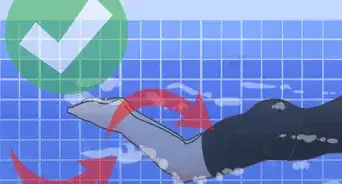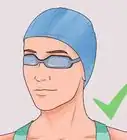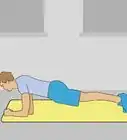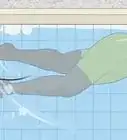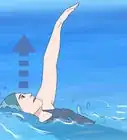This article was co-authored by Brad Hurvitz. Brad Hurvitz is a Certified Swimming Instructor for My Baby Swims, an adolescent swimming school based in La Jolla, California. Brad is trained as an Infant Swimming Resource (ISR) instructor with ISR's Self-Rescue® program. He specializes in training children aged six months to six years of age survival skills like floating on their back to breathe and swimming back to the wall, while also educating parents on how to better keep their kids safe. He has a Master of Business Administration from Oregon State University.
There are 15 references cited in this article, which can be found at the bottom of the page.
This article has been viewed 87,029 times.
Teaching freestyle swimming to children requires alertness, patience, and enthusiasm. It is always better to teach freestyle swimming in the shallow end of the pool than in a natural body of water so that you can control the depth and overall conditions. Demonstrate as many of the components of swimming as you can for the kids you are teaching, both inside and outside the water.
Steps
Practicing Outside of the Pool
-
1Practice proper breathing outside of the pool. Have kids learn the proper way to breathe when freestyle swimming through repetition. Before getting in the pool for a lesson, have them practice breathing in through their mouth, then breathing out through their nose. Repeat this exercise until the children get used to the pattern .[1]
-
2Demonstrate proper swim strokes outside of the pool. Let children understand the proper arm strokes for freestyle swimming by acting it out for them and letting them copy you. Lift one arm with the other by your side and bend the wrist of the extended arm downward. Make a propeller motion with this one, then repeat with the other arm.[2]
- Show kids how to cup their hands during each stroke.
Advertisement -
3Show kids how to avoid crossover. Crossover, or overlapping strokes, is a common problem for beginner swimmers. To help children grasp how to swim in a straight line, ask them to picture a vertical line running down the center of their body. Demonstrate how, with each stroke, their hand must enter the water without crossing over to the other side of their body.[3]
-
4Teach kids to point their toes and extend their legs as they kick. Pointing your toes and keeping your legs straight help to propel you through the water when swimming. When you are all outside of the pool, give the kids a demonstration on how to point your toes when swimming and have the kids imitate what you do. Later, when they are in the water, have the kids practice pointing their toes and extending their legs while kicking so they get used to doing it.[4]
-
5Have kids do posture improving exercises. Keeping your back straight while swimming is important to help avoid crossover and injury. Show kids how to improve their posture by having them pull their shoulders back, stomach in, and push their chest forwards. Have them bring their arms up in a "T" or "V" shape and hold this position for 10 seconds. Repeat this 5 times.[5]
-
6Quiz kids about swimming and safety rules. A big part of swimming is being alert and knowing the right moves, so it is important to go over the theoretical part of swimming with kids. Review everything from basic safety rules, like never swimming without a grownup, to rules about what to do when swimming. Quiz children who are old enough to communicate what they have learned.[6]
Getting into the Water
-
1Have children go through the motion of breathing in the water. Have children stand in the water, about chest high. To practice breathing, have them put their face down into the water and exhale, then quickly turn their head to the side and inhale. Ask them to repeat this pattern until they reach a fast and even rhythm of mouth-inhale, nose-exhale. [7]
- Their heads should move minimally between the water and the side. Tell children to move their head up from the water as though someone tapped them on the shoulder.
EXPERT TIPBrad Hurvitz is a Certified Swimming Instructor for My Baby Swims, an adolescent swimming school based in La Jolla, California. Brad is trained as an Infant Swimming Resource (ISR) instructor with ISR's Self-Rescue® program. He specializes in training children aged six months to six years of age survival skills like floating on their back to breathe and swimming back to the wall, while also educating parents on how to better keep their kids safe. He has a Master of Business Administration from Oregon State University.Certified Survival Swimming Instructor
 Brad Hurvitz
Brad Hurvitz
Certified Survival Swimming InstructorWhat Our Expert Does: To help a student learn the breathing rhythm for swimming, first I breathe with them normally for a few seconds above the water. Then, using the same rhythm, I'll inhale, then go underwater, exhale with bubbles, and come back up. Once the student can copy that, I'll slowly start to bring them into a stroke while breathing in that same rhythm.
-
2Make children focus on exhaling under water. Exhaling is more important than inhaling in freestyle swimming, and more difficult. Teach kids to put special focus on breathing out by encouraging them to try blowing bubbles underwater. The act of releasing all of the air in their lungs into the water should create a flurry of bubbles that will entertain them.[8]
- Children should be able to exhale fully under water so they don't have to do so when their face is to the side. Waiting to exhale will result in less air being inhaled overall or an irregular breathing pattern.
-
3Have kids practice kicking while holding onto the side of the pool. Have the kids get into the pool and line along the side, facing the gutter. Tell them to place their hands on the gutter and kick their feet off the floor, allowing their legs to float up behind them. Have them kick their legs vigorously to keep them from sinking back into the water.[9]
Swimming with Help
-
1Play the “front float” game. Have a child face you in the water, with their arms around your neck. Start walking backwards slowly. When the child starts to rise into a front float position, say “Kick your legs!”. Walk backwards faster, giving them the sense that their kicking is moving them faster.[10]
-
2Practice kicking with a kickboard. In the water, have children grip their kickboards firmly with one hand on each side. Tell them to extend their arms ahead of them as far as possible and kick their legs. This exercise will shows children how their leg movements will move them forward.[11]
-
3Have children practice freestyle arm strokes in the water with kickboards. Using a kickboard can help to isolate the arm movement involved in freestyle swimming. Have the kids grab onto their kickboard by the sides and extend their arms forward. Tell them to lift an arm off the board, then to complete the strokes you taught them outside of the pool.[12]
- Children should grip the board between each stroke.
-
4Encourage children to pick an "exhaling arm" and a "breathing arm." "Exhaling arm" means that the arm that will be in the water while your face is also in there. "Breathing arm" refers to the arm that will be in action while your head is to the side. Have the kids practice both sides and decide based on their comfort and preferences.[13]
-
5Have a “kickboard battle”. Once kids are comfortable in the water, get them to participate in swimming games together. Have two kids hold opposite ends of a kickboard and kick their legs as hard as they can. The objective will be to move the opponent backwards by 2 or 3 feet (0.61 or 0.91 m).[14]
- Emphasize safety and good sportsmanship when playing this game. Stop the game if kids get too aggressive.
-
6Do push-off exercises. Have children push themselves off from the side of the pool and swim towards you without a kickboard. To start, have them do 3 strokes, taking one breath in between. If they are comfortable doing 3 strokes, repeat the exercise with 5 strokes, then 8 strokes.[15]
- Children should do this exercise one at a time.
- Stand an arm's length away from the child and move backwards as they swim forward.
Keeping Children Safe
-
1Have kids get used to the water without flotation devices. While kids are learning to swim it is important that they get an accurate sense of how their body floats. Flotation devices like life vests, armbands, and back bubbles provide a false sense of security. Understanding their own limits and abilities is integral to swimming.
- If children need flotation devices to get acquainted with the water, have them use lighter and lighter ones until they are comfortable in the water without anything.[16]
- Other than when you are teaching them to swim, young children should always be wearing a life vest while they are in the water.
-
2Stay no more than an arm's length away from children as you teach them. While teaching children how to swim, stay close enough to reach them if they need assistance. As a general rule, it is ideal to position yourself an arm's length away from them. Be prepared to grab onto a child if they are in distress or can't stay above the water.[17]
-
3Supervise children very carefully. Young children should not be left unattended in pools or natural bodies of water because of the risk of drowning. If you do not have the patience or concentration to monitor children for very long, alternate the responsibility with a friend or family member.
-
4Maintain a 1:1 ratio of adults to children under 4. Babies and toddlers require absolute supervision in the water with no distractions or exceptions. Children under 3 must be accompanied by a single adult at all times in the water, while up to 4 pre-school children can be under the supervision of one adult. An adult should not under any circumstances divide their attention between 2 or more children under the age of 3.[18]
- Children of any age who demonstrate a fear of the water should be given one on one attention at all times.
- Full supervision in the water means maintaining direct physical contact at all times.
- One adult can monitor school-age children (6 or older) in groups of up to six kids.
Community Q&A
-
QuestionWhy is learning swimming important?
 Community AnswerSwimming is great exercise, not to mention the ability to swim correctly has saved thousands of lives. So, it's a very helpful skill as well as a fun pastime.
Community AnswerSwimming is great exercise, not to mention the ability to swim correctly has saved thousands of lives. So, it's a very helpful skill as well as a fun pastime.
References
- ↑ https://www.active.com/swimming/articles/4-steps-to-easy-breathing-in-freestyle-880607
- ↑ http://www.enjoy-swimming.com/freestyle-stroke.html
- ↑ https://www.active.com/swimming/articles/common-freestyle-flaws-and-how-to-fix-them?page=1
- ↑ https://www.todaysparent.com/kids/teach-kids-swimming-with-five-fun-and-easy-games/
- ↑ http://www.swimsmooth.com/core.html
- ↑ https://www.uwhealth.org/files/uwhealth/docs/pdf/pvg_AFCH_SafeKids_waterquizkids.pdf
- ↑ https://www.usaswimming.org/docs/default-source/clinics/online-clinic-series/training-and-technique/3-12-14-freestyle-variations-part-ii-the-foundations.pdf?sfvrsn=6
- ↑ http://www.swimsmooth.com/exhalation.html
- ↑ https://swimswam.com/9-steps-to-teaching-swim-lessons/
- ↑ https://www.todaysparent.com/kids/teach-kids-swimming-with-five-fun-and-easy-games/
- ↑ http://www.enjoy-swimming.com/kick-boards.html
- ↑ http://www.enjoy-swimming.com/kick-boards.html
- ↑ https://www.usaswimming.org/docs/default-source/clinics/online-clinic-series/training-and-technique/5-11-11-key-skills-and-drills-for-age-group-coaches.pdf?sfvrsn=4
- ↑ http://blog.poolcenter.com/article.aspx?articleid=6329
- ↑ https://www.active.com/swimming/articles/4-steps-to-easy-breathing-in-freestyle-880607
- ↑ https://swimswam.com/9-steps-to-teaching-swim-lessons/
- ↑ http://blog.intheswim.com/swim-lesson-plans/
- ↑ https://aquamobileswim.com/supervise-kids-while-swimming/#.WdZotltSxhE
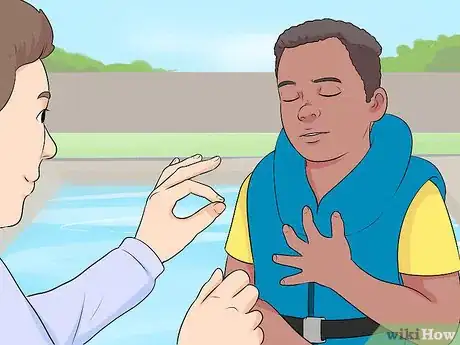
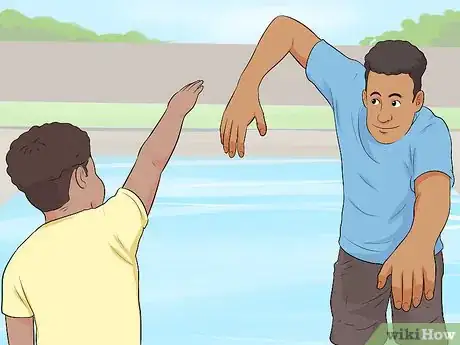
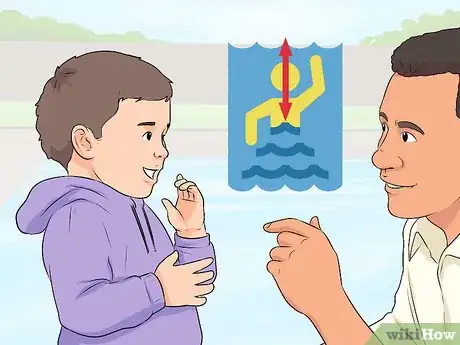
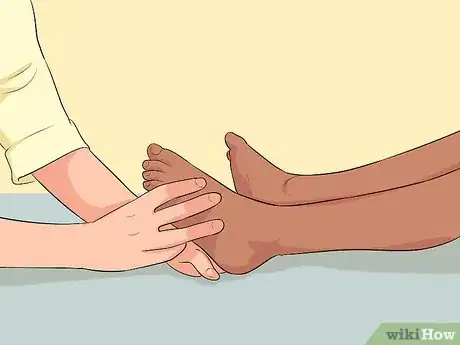

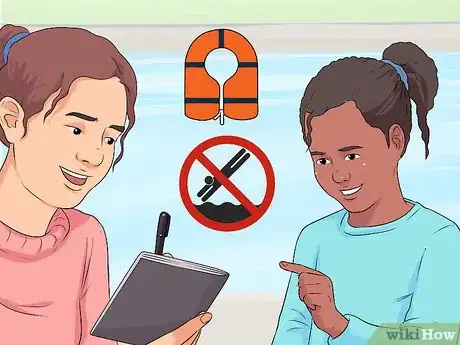
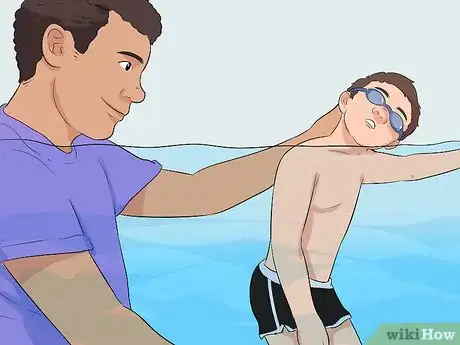
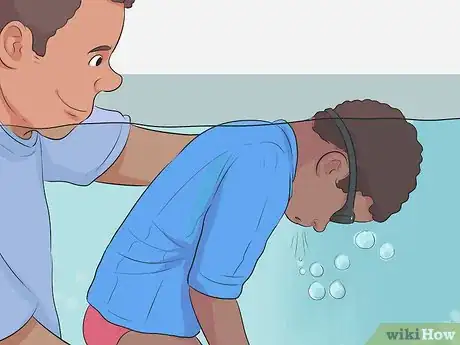
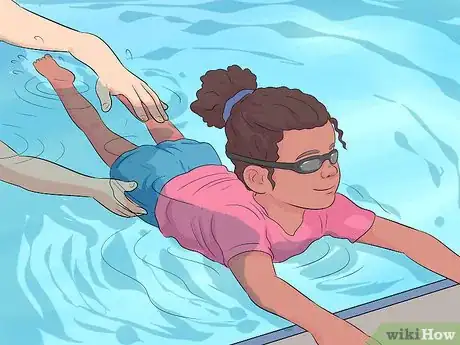
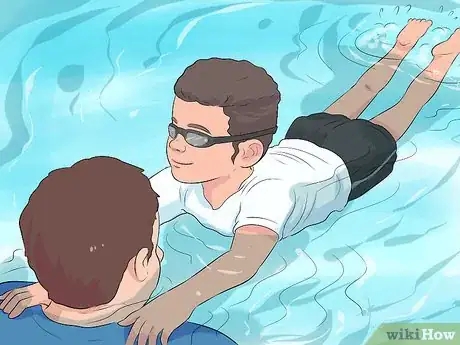
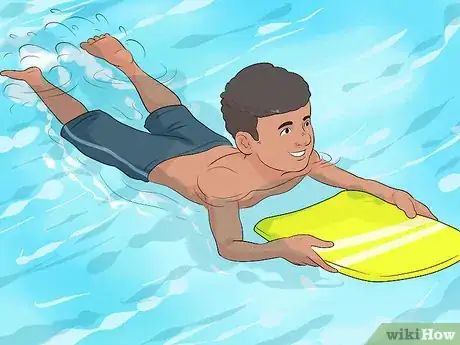

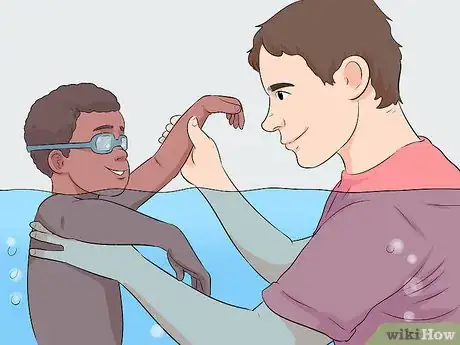
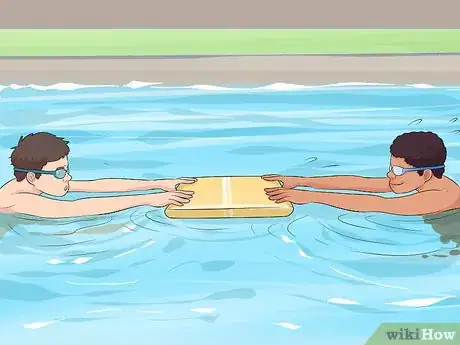
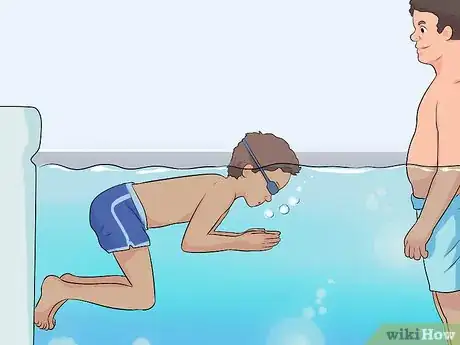
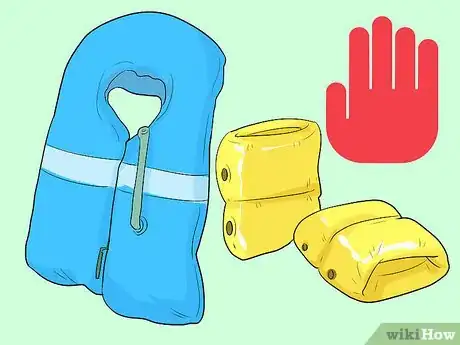
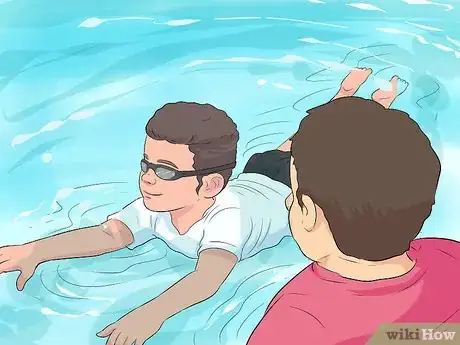
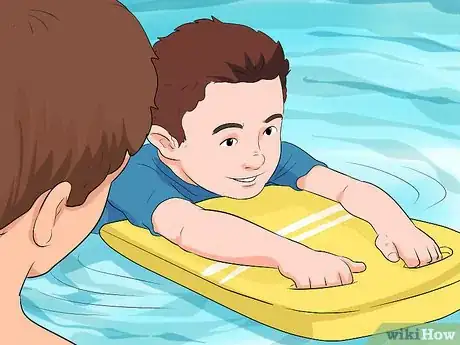

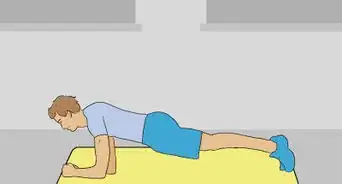
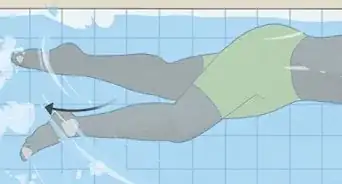
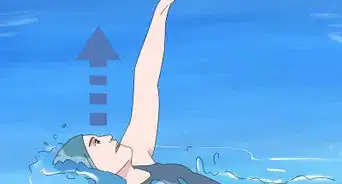
-Step-11.webp)

-Step-7-Version-2.webp)

